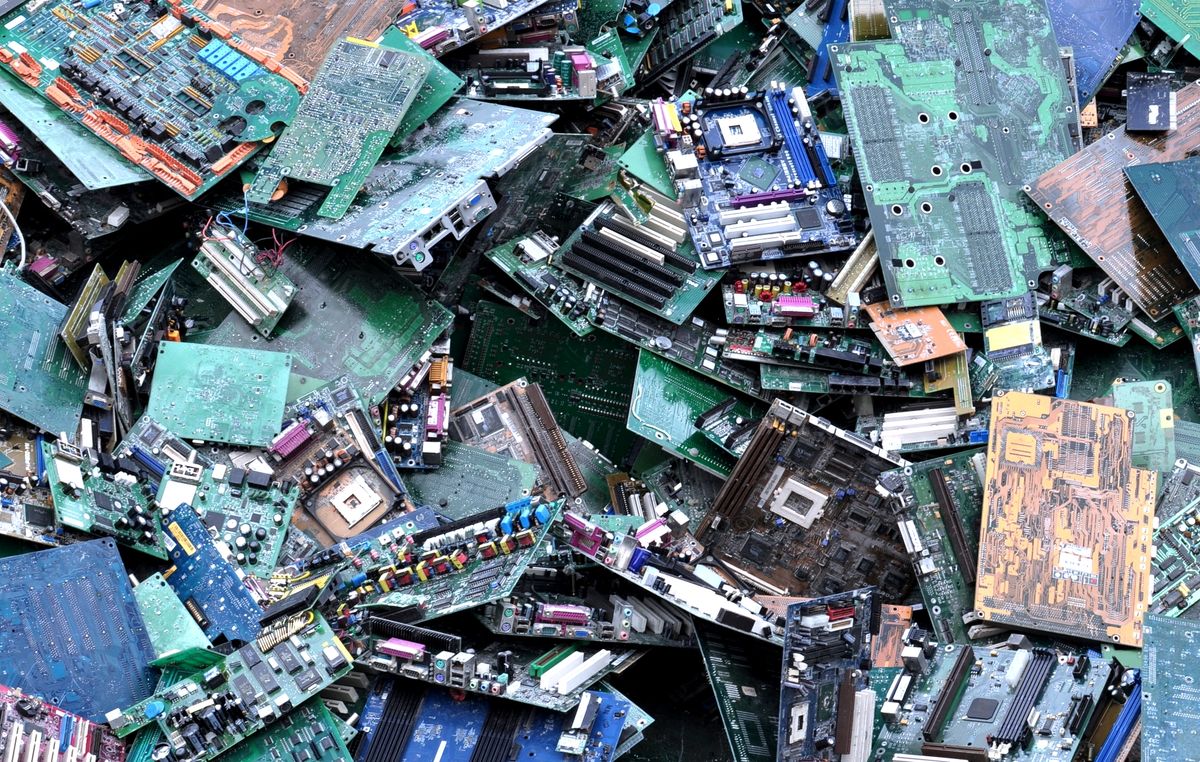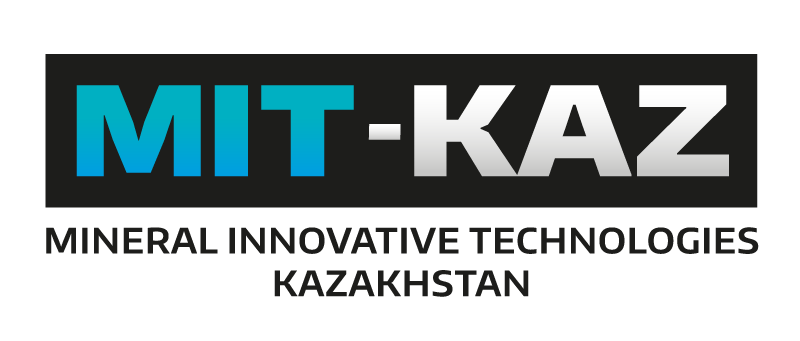SAMPLE PREPARATION SOLUTIONS FOR THE RECYCLING INDUSTRY
HERZOG offers sample preparation solutions specially tailored to the specifications of the recycling industry. End-of-life processes for recovering valuable components are playing an increasingly important role in the value-added chain of industrial production. At the same time, product-related waste streams of, e.g., WEEE (waste lelctrical and electronic equipment) are increasing. This development is associated with unique quality control requirements towards the recycling process with respect to sample preparation and analysis.

1. Exposure to potentially hazardous EOL materials has to be minimized. Therefore, in these cases, automation of partial preparation steps or the complete process is an approach to reduce exposition of operational personnel.
2. Aiming at obtaining representative analysis results requires frequent sampling of the inherently inhomogeneous source material. This causes a significantly increased sample load and multiplication of preparation procedures in the laboratory. Laboratory automation allows to build efficient and cost-effective processes.
3. Reproducibility and consistency are the main conditions for establishing a trustful cooperation between business partners and enabling smooth business transactions. Process standardization and automation are the key enabler for reproducible and consistent analysis results.
4. Material loss and cross-contamination during sample preparation have to be avoided, especially for procedures involving PMs, PGMs and other valuable materials. Measures have to be taken for preventing material waste and effective cleaning between each sample batch.
WASTE ELECTRICAL AND ELECTRONIC EQUIPMENT (WEEE) RECYCLING
HERZOG components are designed to comply with the stringent technical and analytical requirements of the recycling industry.
Electronic scrap (e.g. circuit boards, batteries, cell phones) is one of the fastest growing secondary metal streams in the world. End processing of the more complex components of WEEE commonly occurs in integrated copper smelters. These smelters use non-ferrous extractive metallurgy to separate complex fractions into their constituent metals. Sampling and assaying are necessary in order to determine the composition and content of precious metals in the e-waste stream, and to ensure that the optimum process is used to recover precious metals. With high metal values and the complex range of forms, these materials present many analytical challenges.
The wide variety of different raw materials requires high adaptability of the sample preparation process in the lab. All machines are designed to set the optimum parameters for each material. At the same time, components are tweaked to minimize material loss and contamination. To this end, HERZOG uses special cleaning mechanisms and coatings for all surfaces coming into contact with the material.
During the recycling process, differing materials like escrap, concentrates, and sulfates are assayed. The specific sample preparation procedures may vary from plant to plant. For escrap, after shredding and sampling, increments are usually incinerated to eliminate plastic content. Following removing of ash the material is fused with aluminum or FeS flux to provide a homogenous matrix which allows fine grinding and final sample preparation. Integral steps of sample preparation are separation of material in specific grain size fractions, crushing, coarse and fine grinding, homogenization, representative splitting, and bagging. For concentrates, particular characteristics like, e.g., low fluidity and high adhesiveness have to be considered and machine parameters to be adjusted accordingly. All sample pathways and parameters like, e.g., exact weights are automatically logged and can be reviewed using the HERZOG PrepMaster.
HERZOG can call on vast experience in sample preparation of recycling material. In our test center we can figure out the optimum preparation for your specific material. Take advantage of our knowledge and step into the automation of sample preparation with all its benefits.
CATALYTIC CONVERTER RECYCLING
Automotive catalysts were introduced in the 1970’s to reduce harmful atmospheric emissions. Today, three-way-catalysts are able to decrease the emission of carbon monoxide, hydrocarbons and nitrogen oxides. Those compounds are captured through the catalytic properties of precious metals like platinum, rhodium and palladium. Due to the rising demand, their monetary value and the beneficial environmental influence, PGM have become an important part of industrial processes. Automotive catalysts are generally composed of ceramics. These ceramics are loaded with precious metals which are located on the wash coat. About 50-60% of the precious metals contained in catalysts are recycled worldwide. To achieve recycling rates of spent catalysts of up to 98%, milling, sampling and refining have to be done with modern technologies.
Recycling of spent catalysts is mainly based on pyrometallurgical processes using plasma-type furnaces and top submerged lancing (TSL) furnaces. The catalyst carrier material like alumina, silica and magnesia has major impact on the slag liquidus temperature, furnace function and metal recovery rate. Simultaneously, even small iron slag concentration requires significantly higher furnace temperatures. Precious metals are collected in metal phases and subsequently further refined.
It is well known that deficient sampling and sample preparation can have high financial impact. Therefore, during sub-sampling of the primary lot the integrity of the sample has to be preserved. Additionally, the high prices for precious metals require an analytical accuracy of at least 0.02 %. Representative sampling and sample preparation are also crucial because the PGM credit is an important part of the contract between the refinery and the raw material supplier.
Samples from automotive catalysts are commonly analyzed by AAS, ICP-OES and XRF. Wet chemical sample preparation is time consuming and, due to its complexity, not suitable for industrial applications. For these reasons, samples of catalytic materials are prepared preferentially as pressed pellets. The analysis of pressed powders requires a particle size, which is at least smaller than 70 µm. Crucial for analytical accuracy is the reproducibility of sample preparation to match the matrix of the calibration samples. Additionally, sample loss and cross contamination has to be minimized. Recovering the whole sample is important by the fact that ceramic dust is enriched with PGMs by the factor 2-3.
The fine powdered catalysts are sensitive for re-agglomeration. Therefore, the parameterization for grinding has to be versatile and steplessly adjustable.
Before analysis, the catalyst needs to be dismantled and the steel shell must be removed. Afterwards, the whole carrier is prepared for analysis. The monolith has to be crushed and pulverized down to a suitable size. This can be done with a special mortar crusher (HP-C/M AUT) and an automatic mill like, e.g., the HP-MA. Sometimes drill cores are additionally taken from catalysts. The size of a catalytic monolith can be quite variable so that the automatic mill must provide a batch processing function to allow a convenient and reproducible sample preparation. The automatic mill is either directly connected to an automatic pellet press and spectrometer or provides a magazine for the fine ground samples.
The HP-C/M AUT is a crusher especially designed for automotive catalyst. Entire monoliths can be crushed down to a particle size suitable for fine grinding. The material loss is reduced to a minimum. The material recovery in the HP-C/M AUT is substantially more than 99%. Rigorous cleaning prevents contamination of subsequent samples.
The automatic mill HP-MA is especially suitable for preparing precious metal bearing materials because the machine offers various cleaning options to avoid cross contamination. Three cleaning features namely compressed air, sand cleaning and wet cleaning allow a sufficient material removal. Using the different cleaning functions, cross contamination can be reduced to a low ppm-level. Furthermore, spoon sampling during the material input provides the possibility to pre-contaminate the grinding with the following sample. The final particle size after ± 30 seconds of milling is commonly 90% below 50 µm. The recovery rate of the automatic mills are usually higher than 97%. Grinding vessel, ring and puck are made from chrome steel in order to avoid line overlapping during spectroscopy due to elements introduced by the grinding stones.
Larger amounts of catalytic material can be ground using the HP- M1500. This pulverizer offers the same options as the HP-MA while the volume of the grinding vessel is significantly larger.
In the automatic press HP-PA, almost no additional binding agents are necessary to achieve a high quality pressed pellet with a smooth surface. Cleaning of the automatic press is commonly done by means of compressed air. If cleaning by air is not sufficient, a Mylar foil can be used to cover the pressing tool and prevent it from contamination.
COPPER RECYCLING
Copper is obtained from its ores during mining operations or from recycling of copper scrap or smelter residues such as slag, dust and sludges. During recent years, copper recycling has become more and more important. Recently, approximately half of the copper used in the industry originated from recycling of copper components and alloys, which consumes significantly less energy compared to primary copper production.
During the recycling process, copper scrap is smelted in primary and secondary smelters. For oxide scrap material, addition of carbon, iron and fluxes lead to reducing conditions. Depending on the quality of the scrap, electrorefining is necessary. In primary smelters, copper scrap is largely applied as a coolant in ore-based copper production. In the matte-converting process, impure scrap is used for the slag-making stage whereas pure copper is used for the copper-making stage. Cooper scrap can be smelted in a number of different furnaces including blast furnaces, reverberatory, rotary, bath smelting or electrical furnaces.
In addition, electronic scrap (WEEE) enters the copper recycling process. The copper content in electronic scrap may vary between 3 and 27%. The electronic scrap is usually smelted under reducing conditions resulting in so-called black copper, which is further processed under oxidizing atmosphere to remove impurities.
The major challenge for sample preparation in the copper mining and recycling industry is the wide range of element concentrations and varying material properties of the various QC samples. One important focus of sample preparation is therefore to avoid cross-contamination between subsequent samples.
Samples originating during the copper production process include geological samples, leach feeds/ residues, concentrates, slags, matte, anodes, cathodes, ashes, environmental samples, and many more. Quality control involves many different and complex analyzing methods including XRF, quantitative XRD, ICP- OES, AA, combustion analysis, fire assay, and other more. HERZOG equipment covers all relevant preparation steps including moisture determination, filtration and drying, crushing, pulverizing, pelletizing, fusion, screening, blending/splitting, and bagging.
ALUMINIUM RECYCLING
HERZOG components are designed to comply with the stringent technical and analytical requirements of the recycling industry.
Aluminum can be recycled any number of times without any detrimental effects on the base metal properties. Recycling provides huge energy savings in the process and consumes only a small fraction of the energy required for initial smelting of the alumina. The smelting process of pre-treated scrap aluminum together with pure aluminum ingots is carefully monitored until all levels of impurities have been removed. Accordingly, frequent sampling and assaying of molten material and slag is required.

